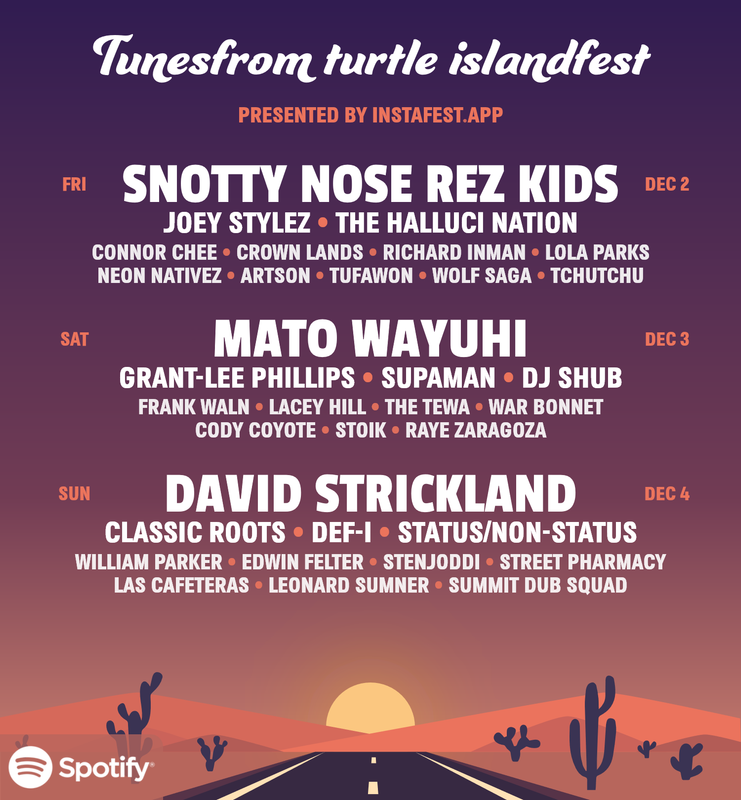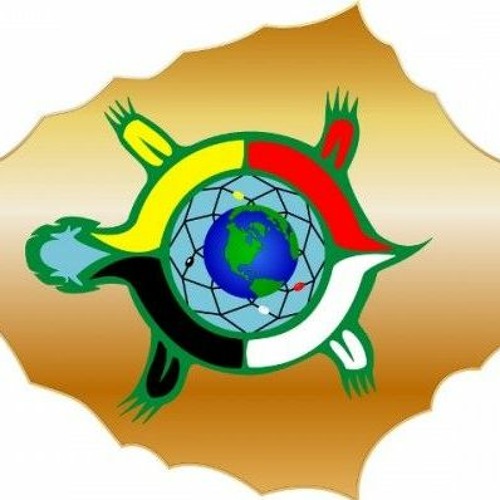
Harmonies of Resilience: Musicians Championing Turtle Island’s Truths
Across the vast, diverse landscapes known to Indigenous peoples as Turtle Island – a name encompassing North America, reflecting ancient creation stories and deep spiritual connection to the land – a powerful chorus is rising. Musicians, both Indigenous and their allies, are leveraging their platforms, voices, and artistry to amplify critical messages ranging from environmental justice and land rights to cultural preservation, the MMIWG2S+ crisis, and the ongoing fight against systemic inequities. This is not merely entertainment; it is a profound act of truth-telling, advocacy, and a call to collective action, directly challenging colonial narratives and fostering a deeper understanding of Indigenous experiences.
For millennia, music has been an intrinsic part of Indigenous cultures across Turtle Island, serving as a conduit for ceremony, storytelling, healing, and the transmission of knowledge from one generation to the next. From the rhythmic pulse of the drum in powwows to the haunting melodies of traditional flutes and the guttural power of throat singing, sound has always been a vital force. Today, this ancient power is being harnessed anew, fused with contemporary genres and modern media to reach global audiences, transforming stages and airwaves into forums for decolonization and justice.
One of the most pressing issues amplified by these artists is the urgent need for environmental stewardship and land protection. Indigenous worldviews inherently understand the interconnectedness of all life and the sacredness of the land and water. This perspective stands in stark contrast to the extractivist industries that have historically, and continue to, exploit resources on Indigenous territories, often without consent, leading to ecological devastation and cultural disruption.
The fierce Inuk throat singer Tanya Tagaq stands as a formidable voice in this arena. Her Polaris Prize-winning album Animism and subsequent works are raw, visceral expressions that evoke the power of the Arctic landscape and the threats it faces. Tagaq’s performances are not just musical; they are a physical manifestation of her connection to the land, an almost guttural cry against climate change, industrial encroachment, and the existential threats facing her people and their ancestral home. She uses her art to confront audiences with the uncomfortable truths of environmental degradation, demanding a re-evaluation of humanity’s relationship with the natural world. "My culture is about the land, the animals, and the people," Tagaq often states, underscoring the indivisible link between her identity, her music, and her activism.
Similarly, the groundbreaking electronic group The Halluci Nation (formerly A Tribe Called Red) has consistently woven environmental and land protection themes into their sound. Their "powwow-step" music, blending traditional powwow drumming and chanting with electronic dance music, became an anthem for the Standing Rock Sioux Tribe’s resistance against the Dakota Access Pipeline. Their song "We Are The Halluci Nation," featuring a powerful spoken word piece by John Trudell, directly addresses the need for Indigenous sovereignty and the protection of water, famously declaring, "We are the water that flows through this land." Their music doesn’t just raise awareness; it creates a sonic landscape of resistance, inviting listeners to join the fight for Mni Wiconi – Water is Life.

Beyond environmental concerns, musicians are crucial in advocating for land rights and sovereignty, challenging the very foundations of colonial occupation. The legacy of broken treaties, forced removals, and the ongoing struggle for self-determination are central themes in their work.
Legendary Cree singer-songwriter Buffy Sainte-Marie, a voice of Indigenous activism since the 1960s, remains an enduring icon. Her seminal song "My Country ‘Tis of Thy People You’re Dying" laid bare the historical injustices inflicted upon Indigenous peoples long before such topics entered mainstream discourse. Sainte-Marie’s work continually calls for recognition of Indigenous land rights, the honoring of treaties, and the dismantling of systemic racism. Her career, spanning over six decades, is a testament to the enduring power of music as a tool for social change, tirelessly educating generations about Indigenous resilience and rights. She often quips, "I don’t mind being an activist as long as it’s not a dirty word."
More recently, Jeremy Dutcher, a Wolastoqey (Maliseet) tenor and composer, brought his ancestral language and culture to the forefront with his Polaris Prize-winning album Wolastoqiyik Lintuwakonawa. Dutcher meticulously researched and reinterpreted archival wax cylinder recordings of traditional Wolastoqey songs from the early 20th century, breathing new life into nearly lost cultural heritage. His work is a profound act of reclamation, asserting the vitality and beauty of Indigenous languages and challenging the cultural erasure imposed by colonization. By performing these songs in their original language, Dutcher not only preserves but actively revitalizes his culture, reminding the world that Indigenous languages are not relics of the past but living, breathing expressions of unique worldviews.
The fight for social justice and healing is another critical dimension of musicians’ advocacy. The crisis of Missing and Murdered Indigenous Women, Girls, and Two-Spirit people (MMIWG2S+) is a stark reminder of the ongoing violence and systemic neglect faced by Indigenous communities. Artists are giving voice to the voiceless, demanding justice and accountability.
Colombian-Canadian artist Lido Pimienta, with her powerful and often confrontational music, addresses themes of Indigenous womanhood, colonialism, and the MMIWG2S+ crisis. Her Polaris Prize-winning album Miss Colombia explores the complexities of identity, challenging both external perceptions and internal struggles. Pimienta’s art is a bold assertion of Indigenous female strength and a poignant commentary on the violence and discrimination faced by Indigenous women across the Americas. She uses her platform to amplify the voices of those silenced, bringing uncomfortable truths into the spotlight and fostering solidarity.
Similarly, artists like Black Belt Eagle Scout (Katherine Paul, Swinomish and Iñupiaq) explore themes of queer Indigenous identity, environmental protection, and the deep connection to ancestral lands through introspective indie rock. Her music often speaks to the healing process from intergenerational trauma, the search for belonging, and the quiet power of resilience within Indigenous communities.
Beyond specific issues, these musicians collectively contribute to cultural revitalization and education. For centuries, colonial policies aimed to suppress Indigenous languages, spiritual practices, and artistic expressions. Residential schools in Canada and boarding schools in the United States were instruments of this cultural genocide. Today, Indigenous artists are at the forefront of reversing this damage, celebrating their heritage, teaching their languages, and sharing their stories with the world. Their music becomes a powerful tool for decolonization, challenging stereotypes, and presenting authentic Indigenous perspectives.
The impact of these artists extends beyond the stage and recording studio. Many are actively involved in community organizing, fundraising, and direct action. They lend their voices to protests, participate in educational initiatives, and collaborate with Indigenous organizations working on the ground. Their celebrity status opens doors, attracting media attention and resources to causes that might otherwise remain marginalized.
Yet, the path is not without its challenges. Musicians often face the pressure of being seen as "representatives" of all Indigenous peoples, a burden no single artist can bear. There’s also the constant threat of cultural appropriation, where non-Indigenous artists may borrow elements without understanding or respecting their origins, or without giving proper credit or benefit to Indigenous communities. The artists leading this movement, however, navigate these complexities with integrity, consistently centering Indigenous voices and demanding authentic allyship.

In essence, musicians raising awareness for Turtle Island are doing more than just creating art; they are weaving a tapestry of resistance, resilience, and hope. Their melodies carry the weight of history, the urgency of the present, and the aspirations for a just future. They remind us that the struggle for Indigenous rights, environmental protection, and cultural survival is a global one, intimately connected to the health of our planet and the pursuit of true reconciliation.
As the world grapples with escalating environmental crises, social inequities, and the legacy of colonialism, the harmonies emanating from Turtle Island offer not just a critique, but a vision for a better way forward – one rooted in respect, reciprocity, and a profound connection to the earth. Their music is an invitation to listen, learn, and ultimately, to join in the chorus for justice and a sustainable future for all. The beat goes on, echoing across the continent, reminding us that Turtle Island is not just a place, but a living, breathing entity whose truths are being sung into existence.

